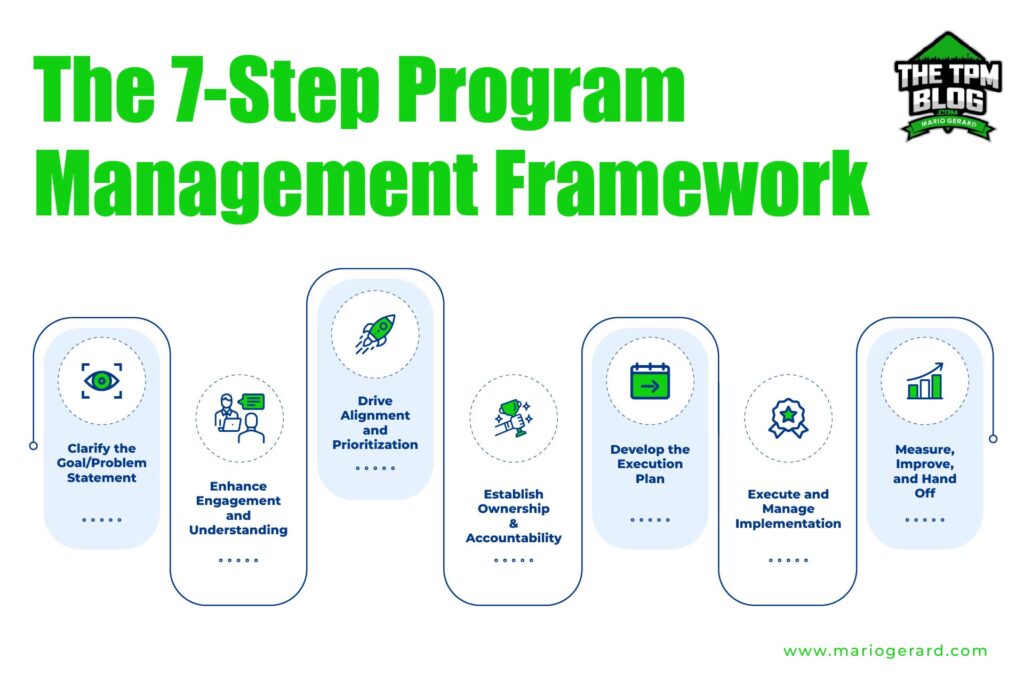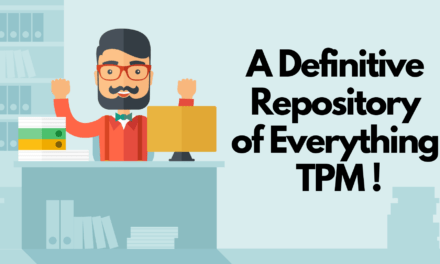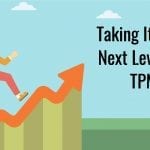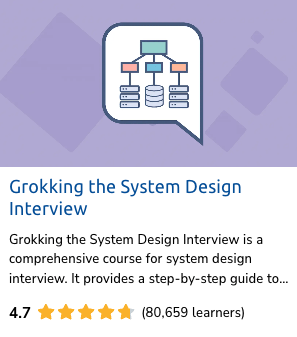Last updated on September 23rd, 2024 at 12:21 pm
As a Technical Program Manager (TPM), you are often faced with owning complex, ambiguous programs, tasked with unraveling details and learning on the job. The TPM role demands the ability to create and communicate a clear vision and strategy amid uncertainties. Despite the unique nature of each program, this 7-step framework effectively fosters understanding and demonstrates progress in addressing a myriad of issues that need to be solved for the overall program to be successful.
This framework emphasizes the importance of transparency, collaboration, and effective communication in program management. The steps progressively decrease ambiguity and enhance the overall understanding of the problem(s) to drive impactful outcomes for the program. It is imperative for TPMs to consistently engage stakeholders, validate assumptions rigorously, and establish transparent expectations across all program facets (refining the goal/problem statement, executing plans, assessing the impact of changes, tracking metrics, etc.) to ensure alignment and success. Though tailored for most scenarios, the steps are not strictly sequential. As you address the core goal/problem, be prepared to identify and manage new issues with the same approach. The framework is versatile, scalable, and suitable for addressing programs and programs of any scale or urgency.
If inheriting a program, it is crucial to add an initial step of assessing its current stage and meeting with the various stakeholders to get their feedback. Also, review past actions to establish a baseline before using the framework. This provides essential context and insight into the program’s current state, allowing for informed decision-making and effective management.
The 7-Step Program Management Framework
Below are detailed explanations of each step in the program management framework, including practical guidance on the approach and expected outcomes.
Step 1: Clarify the Goal/Problem Statement
As a TPM, gathering all available context, considering past experiences, and asking relevant questions to formulate a clear goal/problem statement is crucial. This understanding is essential for reducing ambiguity, effectively addressing the issue, and ensuring stakeholder alignment.
a) Establish Context and Understanding
Retrieve existing program documents, requirements, and past meeting notes to establish a deeper understanding of the problem to be solved. Review them thoroughly to formulate targeted questions and gather answers from stakeholders. Employ various tools and techniques, such as email, brainstorming sessions, focus groups, interviews, and surveys, to gather insights on the problem. These techniques serve multiple purposes: fostering ownership, gaining diverse perspectives, and creating a comprehensive document of the goal/problem.
- Informal Discussions: Use a preferred internal communication channel to engage internal stakeholders, customers, and dependencies with questions, sending 1-3 questions daily to stimulate discussion.
- Focus groups: Aim for 30 minutes each with at least five participants (extendable to 20 for complex issues). Keep the questions undisclosed beforehand, but record the outcomes.
- 1:1 Interviews: Meet with key stakeholders or experts identified through the previous techniques to help understand nuances and fine-tune your perspective.
- Survey/Email: Send a series of questions and compile the answers.
b) Identify Stakeholders and Domain Experts
By understanding the needs, expectations, and influence of all involved parties, you can facilitate effective communication, alignment, and collaboration. In many cases, you will need to bring the program to their attention. Crafting initial program documents with a draft goal/problem statement will help facilitate initial conversations.
Build a support system of domain experts who can educate you on the various business or technical nuances of the program. These could be senior engineers, architects, managers, TPMs, product managers, customer service, operations managers, or other leaders whose teams are impacted by the program. Boost trust and connections by seeking stakeholder recommendations on who might be a go-to person for questions in their space. Throughout the program, use these domain experts to review findings for accuracy before sharing them with a broader audience.
c) Challenge Assumptions
Constantly evaluate the breadth of the audience/stakeholders and consider if adjustments are needed. Additionally, it’s crucial to address any security or legal concerns promptly. Seeking input from extra sources, such as senior engineers and business leaders or customer-facing roles, can provide valuable insights. Use suggestions from stakeholders to engage with other teams to gather diverse perspectives on the problem space.
d) Define Impact and Urgency
Through the efforts above, you are slowly becoming the subject matter expert. The TPM must justify the significance of the goal/problem with data to aid prioritization. Evaluate the scope of the problem to categorize it as a minor bug, an enormous undertaking, or a widespread issue that affects multiple customers or geographies. Define the impact of not resolving the problem/ meeting the goal to highlight why it is essential. These are necessary data points to influence stakeholders. Understanding the scale of the challenge not only informs our response but also underscores the urgency of our actions.
Outcome of Step 1
At the end of this step, you will have a high-quality program narrative, refined problem/goal statement, and data that supports a deeper understanding of the program. You will have become a subject matter expert and have created awareness of the program amongst stakeholders and partners.
Step 2: Enhance Engagement and Understanding
This step focuses on the importance of collaboration and communication in refining the goal/problem statement and using metrics to ensure a shared understanding among stakeholders, partners, and experts. By involving all relevant parties and utilizing formal program documents, you can align everyone’s goals, criteria for success, scope, metrics, and risks, fostering a cohesive approach to delivering across multiple owners or organizations.
a) Establish metrics
To achieve a shared understanding of the problem, stakeholders, partners, and domain experts must align on success metrics. Without clear links between the problem, supporting data, metrics, and the mechanisms for the solution, the approach will likely face challenges from stakeholders and partners.
- Key Performance Indicators (KPIs): Identify KPIs that align directly with the program’s goals. Select quantifiable and trackable KPI metrics to measure progress effectively.
- Quantitative and Qualitative metrics: Incorporate both to provide a comprehensive view of performance, ensuring a robust and insightful evaluation of the program’s impact over time. Quantitative metrics might include but are not limited to budget variance, schedule adherence, defect rates, revenue earned, number of downloads/users, net promoter score, and return on investment (ROI). Qualitative metrics include but are not limited to reviews, customer satisfaction, team morale, and stakeholder engagement.
- Baselines: Determine the current state to have a point of comparison as the baseline for metrics. You can also use past program data as a reference for setting baselines.
b) Set Specific, Measurable, Achievable, Relevant, and Time-bound (SMART) Criteria
Engage stakeholders in defining success criteria to ensure buy-in and support. Based on their feedback, iteratively refine the goal/problem statement.
- Specific: Clearly define what is to be achieved.
- Measurable: Ensure that progress and final outcome can be tracked with quantifiable indicators.
- Achievable: Set realistic targets that can be accomplished with available resources.
- Relevant: Align with broader business goals.
- Time-bound: Set deadlines for achieving each goal.
An example of SMART criteria for a program that aims at Increasing customer satisfaction for the company’s online support service would be:
- Specific: Improve the response time of customer queries on the online support platform.
- Measurable: Achieve an average response time of fewer than 2 hours in 6 months.
- Achievable: Implement an AI-driven chatbot for initial customer queries.
- Relevant: Enhancing response time directly impacts customer satisfaction and loyalty, aligning with the company’s overall goal to improve customer experience.
- Time-bound: Achieve the target average response time within six months.
Thus, the example program would have a refined SMART goal statement: “Within six months, we will increase customer satisfaction by reducing the average response time for our online support service to under 2 hours by implementing an AI-driven chatbot.”
c) Expand Risk Assessment
Identifying, gaining insights into risks, and crafting mitigation strategies will broaden understanding of the problem space, revealing new partners and experts who might be critical to program success.
- Continuously Identify Risks: Conduct a thorough initial risk assessment early and repeat periodically, involving key stakeholders and team members to gather diverse perspectives. Minimize effort by following established and proven methods and leveraging existing systems such as brainstorming sessions, interviews, SWOT analysis (Strengths, Weaknesses, Opportunities, Threats), checklists, and learning from past programs.
- Categorize Risks: Organize identified risks into categories (e.g., technical, financial, operational, external) and propose mitigation strategies to understand their potential impact. Evaluate the probability and impact of each risk using qualitative and quantitative analysis methods, such as risk matrices or Monte Carlo simulations.
- Be Vocal: Voice the program’s risks clearly and concisely, including their possibility of occurrence and impact. Most importantly, be transparent and ask for help when needed. For example, this could be approval and support to implement potential risk mitigation solutions or to unblock resources.
- Fail Fast approach: Look for low-cost ways to validate assumptions or feasibility to build a proof of concept to reduce risks and ensure you are on the right path.
d) Strengthen Stakeholder Engagement and Understanding
Share your understanding of the goal/problem, metrics, risks, and assumptions with all stakeholders, and actively seek feedback. Engaging with a broad audience early ensures comprehensive input and avoids the need to update new partners mid-discussion.
- Continuously update the program document as you gather new information, identifying potential owners and their solutions.
- Create a RACI (Responsible, Accountable, Consulted, Informed) matrix for each ownership area. This will help clarify roles and responsibilities while also defining who needs to be consulted, who is responsible for delivery, and stakeholders that need to be kept informed about progress and potential risks that could hinder the successful completion of their goals.
Outcome of Step 2
At the end of this step, using feedback and input from stakeholders, you will have refined the program narrative document that defines the goal/problem statement and established well-defined success criteria and metrics against which the program will be evaluated. The stakeholders and partners will have reviewed the document and other artifacts to gain a deep understanding of the program, impact, and ownership expectations. You will also have started building up the program document repository containing the risk register, records of stakeholder feedback sessions, and meeting notes.
Step 3: Drive Alignment and Prioritization
At this stage, the TPM will be the subject matter expert on the goal/ problem, and your stakeholders will look to you to explain why they should invest time and resources toward a solution. Despite stakeholders’ understanding of the program, competing priorities may affect the scope or timeline. The TPM focuses on achieving alignment and prioritization to secure commitment for resources and high-level timelines.
a) Align on Impact
Achieving alignment on the goal/problem statement and measurable success criteria is crucial for program success. Explicit agreement prevents misinterpretations and ensures focus on the right issues.
- Use the comprehensive program document, which includes data on impact, KPIs, and metrics baselines, to gain consensus with stakeholders on the value of the goal/problem statement.
- Build trust by providing regular status updates and commit to a cadence for providing updates on the measurable success criteria over time to maintain alignment and ensure program success.
b) Drive Prioritization
Use data and metrics to support decision-making and prioritize tasks aligning with the program’s goals. This provides a data-driven, transparent approach that everyone can understand.
- Propose Timeline: Develop an initial program execution plan outlining key deliverables, milestones, and resource requirements to propose a completion date.
- Surface Risks: Evaluate and surface risks early to enable informed decision-making and build stakeholder trust. The TPM should identify any mismatch between the proposed completion date determined through high-level estimates and the required completion date determined by working backward from the goal/problem statement. These risks will require program scope or schedule changes for alignment.
- Prioritization Criteria: Establish criteria for prioritizing tasks and issues based on impact, urgency, and resource availability.
- Data-Driven Decision Making: Share data that will help partners determine how to prioritize the problem. Think beyond your space and seek outside opinions and consultation. Evaluate and surface risks early so that stakeholders can help assess them.
- Reference Documentation: Use the comprehensive program document, high-level program execution plan, and additional supporting program documents(meeting notes, research findings, and analysis results) for reference throughout the program lifecycle.
- Iterative prioritization: Meet with stakeholders until you gain their commitment on resources and the high-level delivery timeline. The TPM must iterate with the product manager and corresponding stakeholders to propose scope and timeline changes or escalate to achieve alignment.
Outcome of Step 3
At the end of this step, you will have refined the program document and finalized the problem/goal statement and success criteria that all stakeholders are aligned on. Stakeholders and partners will have committed to supporting the program deliverables and high-level timeline. The TPM has the green light to engage resources and firm up the execution plan. Step 3 and Step 4 are usually concurrent.
Step 4: Establish Ownership & Accountability
Managing large programs often brings new, complex issues and blockers requiring collaboration with multiple teams inside and outside your organization.
a) Establish Single Threaded Owner (STO)
The right program owner, often the STO or program champion, is crucial for providing leadership, ensuring accountability, and driving the program to successful completion. This owner, who may or may not be the TPM, must have the authority to make critical decisions and resolve conflicts. The STO should be aligned with the program’s goals, provide consistent decision-making, and have an aligned vision, regardless of their title. The STO model is being increasingly adopted across large organizations.
As a TPM, you need to identify and recommend candidates for STO to the leadership team. Solicit advice from stakeholders to ensure the right choice of STO based on teams that are the main contributors, which organizations the teams belong to, and alignment issues that have been encountered. If the TPM and STO are different individuals, the TPM supports the STO by keeping them updated on status and risks while escalating issues when necessary. In these situations, the TPM represents the STO in most program meetings and decisions unless escalation is needed. Multiple program owners should be avoided to maintain clear accountability and focus. If required, split the effort into separate programs with distinct goals and metrics.
b) Identify Points of Contact (POC)
The TPM will influence all contributing teams to build a collaborative execution plan using the ownership and engagement strategy described:
- Identify Team Point of Contact (POC): For large, complex programs, assign a POC for each team in the RACI. Consult executive or senior leaders to identify the right POCs for teams outside your organization.
- Uncover Hidden Dependencies: The teams involved may depend on other partners/services that need to be kept informed and aligned. Deep-dive into the proposed plan, expanding each area to ensure teams can work independently. The TPM will identify and add the right POCs for partner dependencies to the RACI and risk register.
- Partner with POCs: The TPM collaborates with Points of Contact (POCs) to develop a plan and implement necessary changes across all organizations. By working closely with POCs, the TPM drives the program to completion, addressing escalations, prioritizing tasks, and resolving issues before involving higher leadership. Each team POC is responsible for meeting their commitments and managing their internal roadmap while collaborating to integrate with other teams.
- Direct Collaboration: After consent from their respective managers, the TPM should connect directly with engineers, designers, testers, and customer service representatives for critical path deliverables. This will help the TPM understand roadblocks and accelerate decision-making.
- Build Team Engagement: To generate excitement, involve POCs and team members in reviewing the program narrative, RACI, and the initial execution plan. Their input allows them to influence the outcome and ensures a thorough understanding of requirements and plans.
- Refine RACI: Recognizing a problem doesn’t make the TPM responsible for solving it, but it is vital to ensure its resolution with minimal impact on the program. Once the responsible team is identified, work with its leadership to clarify goals, avoid scope creep, and ensure accountability through a POC for timely resolution.
Outcome of Step 4:
By the end of this step, the program will have a single-threaded owner to influence alignment and ensure the successful completion of the program across the larger organization. The TPM will have developed a detailed RACI (Responsible, Accountable, Consulted, Informed) matrix identifying all team Points of Contact (POCs), their roles, and responsibilities, including dependencies, problem resolution, and risk management. The selected POCs will have engaged their teams to kick off collaboration to develop the execution plan. The TPM will update the program document with these decisions.
Step 5: Develop the Execution Plan
Managing technical design, problem-solving, timelines, resourcing, and launch planning involves numerous concurrent discussions. The TPM is crucial in coordinating technical design, problem-solving, assessing timelines, resourcing, and launch planning, ensuring seamless collaboration and alignment with program goals. These activities are iterative and may occur concurrently.
a) Kickoff Planning processes
The execution plan encompasses all the actions and activities required to complete the program and guides the day-to-day activities to ensure that tasks are carried out according to the program schedule and match objectives. It Includes tasks, timelines, responsibilities, and resources needed to execute the plan. The TPM will share the high-level execution plan, including expected timelines and milestones, with all contributing teams and POCs. Provide a deadline for finalizing estimates and scope.
b) Coordinate Estimation and Resourcing
Each team owns the estimation and resourcing of their portion of the overall solution. The TPM will ensure that teams have time to refine their estimates to ensure accuracy. When teams are scoping and estimating their program tasks, the TPM’s role involves several key responsibilities:
- Facilitate Communication and Decision-Making: Ensure clear and consistent communication between engineering and other teams to avoid misunderstandings, resolve ownership debates, and share findings that might impact other team’s estimates or integration needs.
- Provide Context: Share the overall program goals, timelines, and constraints with the engineering teams to help them understand the broader context of their tasks.
- Ensure Alignment: Verify that the teams’ estimates and scopes align with the program’s objectives, timelines, and milestones. Verify that their dependencies are also aligned.
- Track Progress: Monitor the scoping and estimation process to ensure it stays on track and addresses any blockers or issues that arise. Ensure that all estimates, assumptions, and decisions are well-documented for future reference and accountability.
- Risk Management: Identify new risks during the scoping and estimation phase and work with the teams to develop mitigation strategies.
- Validate Estimates: Review and validate the estimates to ensure they are realistic and achievable, considering the team’s capacity and historical performance. Challenge the engineering teams to consider solution efficiency and quality in their estimates. Each team will deep-dive into the design, complexity, and resourcing to refine the plan further.
- Iterate on the Plan: Involve stakeholders, partners, contributing managers, TPMs, and engineers through review meetings or offline reviews to get their feedback integrated by the deadline for finalizing the plan.
- Finalize Plan: Secure commitments from all contributing teams and stakeholders, ensuring they confirm their deliverables and timelines before the deadline set with them.
By fulfilling these responsibilities, the TPM ensures that the scoping and estimation process is thorough, accurate, and aligned with the overall program objectives. The STO, executive leaders, team members, and stakeholders must be aligned on all significant changes to the scope and schedule of the final plan.
Related read: Demystifying The Roles and Responsibilities of Program Managers
c) Establish a Communication Process
Consider and adapt to the different communication preferences of stakeholders while also including metrics and success criteria.
- Provide Executive Summary: For executive stakeholders, create a high-level summary that details the goal/problem statement, expected impact in terms of success criteria and metrics, and significant milestones in the timeline.
- Define Cadence: Provide regular status updates and set expectations on what will be included in them. The program update should include a high-level summary, metrics, completed and upcoming milestones, and details.
- Be Transparent: Communicate transparently with executive leaders to avoid surprises. Escalate early and as needed before the issue impacts a milestone.
- Set Expectations: Define a straightforward status reporting process and gain proactive commitment for updates from the various POCs.
- Align on Status: The red, yellow, and green status update system is a simple, visual way to communicate the current status of a program or task:
- Green: The program is on track with tasks progressing per plan, and no significant issues exist.
- Yellow: Some issues or risks need attention but are manageable, and the program is still expected to meet its goals.
- Red: Some serious issues or risks are impacting the program, and immediate action is required to get back on track. The program will remain red until the risk has been mitigated and the schedule or scope has been reset if needed.
- Optimize Meetings: To maximize productivity, consider the necessity and format of status meetings. Meetings should be used to make decisions, gain alignment, resolve or deep-dive issues, and not share updates alone. Schedule meetings as needed with key stakeholders and teams to make decisions and share the outcomes offline with the rest of the program team.
d) Create Documentation
Create comprehensive documentation for the execution planning phase, including updated technical specifications, program timelines, communication strategy, risk register, marketing strategy, resource requirements, and more. By delivering these technical artifacts, the TPM ensures that the program is well-documented, aligned with stakeholder expectations, and executed effectively.
Outcome of Step 5
At the end of this step, all teams who need to contribute to a solution will have committed to a timeline and will have negotiated with any dependent or impacted teams to ensure they can meet the schedule as planned. The TPM will have a comprehensive execution plan with key milestones and a realistic timeline for achieving each stage of the program.
Step 6: Execute and Manage Implementation
Effective program execution requires constant monitoring, strong communication, proactive updates, and handling escalations. Be prepared to adjust plans due to unexpected delays, new data, or changing environments. TPMs bring order, drive progress, and ensure the seamless execution of complex technical programs.
a) Monitor Progress:
As early as possible, establish mechanisms for monitoring progress and making adjustments as necessary to keep the program on track. Try to automate the baseline and KPI metrics to ensure tracking towards the KPI is available early to validate success. Continuously track the program’s progress against the established timelines, milestones, and deliverables. The TPM needs to identify and escalate issues promptly, facilitating quick resolutions and minimizing disruptions to the program timeline.
b) Communicate Status:
Ensure regular, timely, and accurate status reporting to stakeholders, highlighting progress, issues, and risks. Sharing meeting notes for pivotal decisions made will help drive understanding and transparency. Concise and clear updates, which are reviewed by key contributors, help prevent misinterpretation and build trust.
c) Manage Changes:
Evaluate with data, challenge and approve/reject any changes to the program scope, schedule, or resources. Assess the impact and urgency of changes to reprioritize accordingly. Implement mitigation strategies to minimize the impact or escalate for quick resolution. The TPM must make strategic decisions to ensure the program delivers value and meets its intended outcomes.
d) Push for Quality:
TPMs use their technical prowess to collaborate with engineering to refactor code for better efficiency, focusing on reducing complexity and improving logic flow. They push to optimize database queries, indexes, configurations, and API endpoints to enhance performance. TPMs are involved in reviewing load testing results, user acceptance test results, and feedback from beta testers to pinpoint improvement opportunities. TPMs are always looking around the corner to mitigate future problems.
The TPM’s critical contribution in Step 6 is keeping the program on track, handling disruptions, and ensuring successful execution through effective management and communication.
Outcome of Step 6
At the end of this step, the plan’s execution will be complete, success criteria will be met, and the program goal will be achieved, with the solution deployed to production in a stable state.
Step 7: Measure, Improve, and Hand Off
Post-release, the ongoing ownership, operational readiness, support, and improvement will transition to a permanent owner. The TPM will deliver a comprehensive report summarizing the program, highlighting the observed benefits and changes, including feedback, lessons learned, and future recommendations.
a) Ensure Continuous Monitoring
To ensure the established KPIs for success are met and maintained, TPMs ensure that the appropriate monitoring and logging are in place to make sure any regression is identified and will also serve as a new baseline for further improvements. Implementing metrics automation and dashboards for real-time tracking and bug-tracking systems to manage and resolve issues are best practices.
b) Hand Over Long-term Ownership
The TPM will create a new baseline for metrics based on the stable state achieved by the successful completion of the program and provide documentation for a successful ownership handoff. The long-term owner is usually someone who will own and can drive further improvements to the metrics. For a stable handover, the TPM ensures:
- Documentation: Program documentation is up-to-date, including user manuals, technical guides, troubleshooting and support documents.
- Recommendations: They provide feedback from launch and performance data for iterative improvements. They evaluate the program’s scalability to handle increased load and user base to recommend infrastructure upgrades or optimizations if necessary.
- Resource Allocation: Ensure adequate resources (e.g., support staff, infrastructure) are in place to handle post-launch activities and future growth.
c) Lessons Learned
The TPM implements processes to simplify future programs and helps the team improve efficiency through templates and lessons learned. They also use feedback from the team to make improvements. Ideally, they strive to make their role redundant through mechanisms and best practices.
d) Recognition
Celebrate the team’s achievements and contributions to maintain morale and motivation. Thank the team members, the POCs and recognize extraordinary contributions in the final report and throughout the program.
Using these best practices, TPMs can ensure their programs’ continued success and improvement after launch. This approach helps maintain high performance and sets the foundation for future programs.
See also: Fundamental Technical Program Management Skills
Outcome of Step 7
At the end of this step, a new owner will be established and mechanisms will be in place to track the solution’s performance and drive future improvements. The TPM will then move on to other assignments. For their records, TPMs should note the program impact, timeline, and critical contribution to include in their annual performance summary and to keep their resume updated.
Final Thoughts
This framework highlights the immense coordination, decisive action, and oversight essential for successful program execution. TPMs are the linchpins of complex programs, blending technical expertise with strategic oversight to turn ambitious goals into successful realities.
Ready to rock your TPM Interview?
A detailed interview prep guide with tips and strategies to land your dream job at FAANG companies.


















